
© Andy Ross. (Click image for larger version)
Birmingham Royal Ballet
Wink, The Moor’s Pavane, The Shakespeare Suite
★★★✰✰
Birmingham, Hippodrome
23 June 2016, matinee
www.brb.org.uk
Birmingham Royal Ballet (BRB) is celebrating the 400th anniversary of Shakespeare’s death with enthusiasm. Earlier the company danced The Taming of the Shrew and The Dream and this Shakespeare themed triple bill includes new work and the return of a popular David Bintley piece. It shows the wide range of responses possible to Shakespeare’s work from near abstraction to highly condensed narrative.
The programme opens with Wink. This is a new work from Jessica Lang, premiered earlier this year on BRB’s mid-scale tour. It’s a response to Shakespeare’s sonnets and the spoken text of five of these punctuate the piece. Wink itself refers to an opening line “When most I wink, then do my eyes best see”. It’s an attractive piece, well designed and well made with a clear structure.

© Andy Ross. (Click image for larger version)
There is a cast of five men and five women with Brandon Lawrence as the poet. The designs are simple but strong. The men wear white tights with translucent shirts, the women white dresses with inserts of the same sheer fabric. The set consists of ten panels, white on one side black on the other which can be revolved by the dancers to give a blinking or flashing effect. The lighting by Peter Teigen is excellent, and helps to establish shifts of mood from sunny and playful to blue introspection.
The movement is classically based, clean and uncluttered but has interesting quirks. Men link arms oddly. Sometimes there is some same sex partnering, men lifting other men. Lifts are often unexpected and unusual. Lang has her own distinct voice as a choreographer. Brandon Lawrence has a duet with Lewis Turner which is interrupted by a dominant female figure. It is tempting to read into this the Shakespeare’s conflicting attractions to different figures in the sonnets. Brandon Lawrence is always elegant and unhurried in his movement. The company have obviously had enough opportunities on tour to get a strong grip on the material and look very at home in this.
It is an annoyance that the five sonnets used are not identified either in the programme booklet or on the cast sheet. The work concludes with sonnet 71 No longer mourn for me when I am dead. It would have been simple enough to list the sonnets or even give the text on the cast sheet to provide more context for the work.
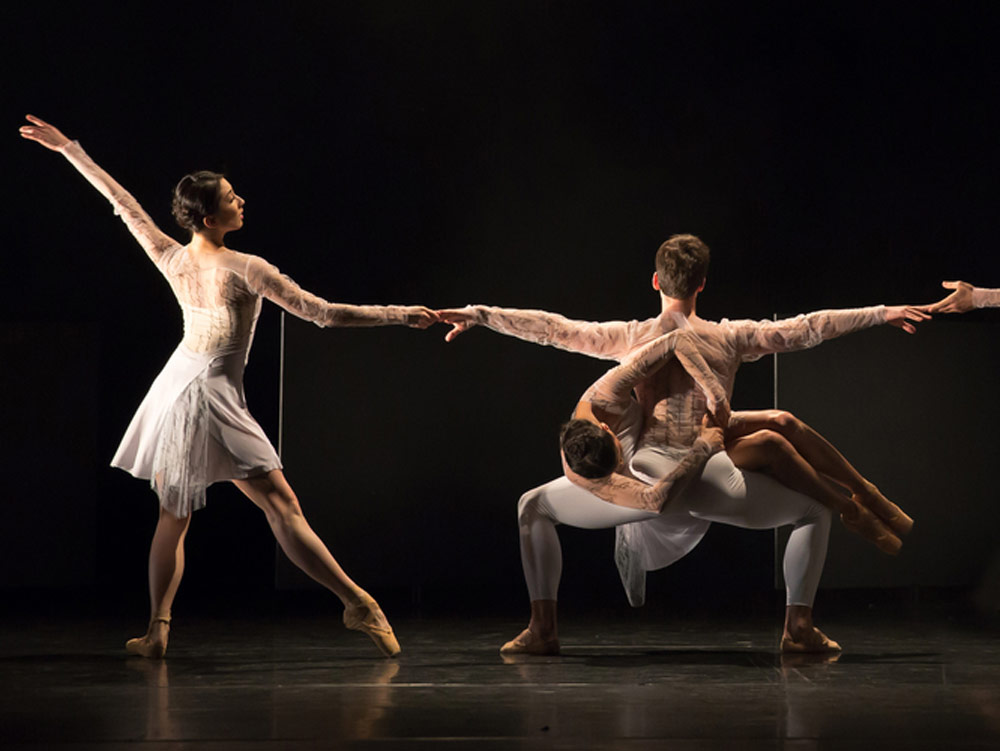
© Andy Ross. (Click image for larger version)
The Moor’s Pavane is new to the company this year. José Limón, a pioneer of modern dance, made this work in 1949. It has been set on the company by Jennifer Scanlon, a former dancer with the Limón company. Subtitled Variations on the theme of Othello this is a distillation of the essence of the play into the interactions of four characters entitled The Moor, The Moor’s wife, His Friend, and His Friend’s Wife.
It’s model of compression. All you need to know about the interaction of the characters and how the tragic conclusion is reached is played out in twenty minutes without any of the dancers leaving the stage. There is no filler or scene setting. Iain Mackay as The Moor’s Friend really relishes the role. His hands insinuate, his leg curls snake-like around Tyrone Singleton’s Moor as he whispers venom in his ear. He is all smiles but the malice soon appears with his wife. Tyrone Singleton appeared in every work in this programme and oozes charisma in every role. As the Moor he had gravitas and authority which gradually crumbled under the malignant influence of the Friend.
The costumes are colourful and elaborate. Elisha Willis, the Friend’s Wife, has a skirt with acres of red velvet, used to conceal the actual moment of the murder from the audience.
The Royal Ballet Sinfonia were back in the pit for this work, where the score is drawn from Purcell, its ceremonial qualities suiting the formal, courtly, contained style of the dance.
The Shakespeare Suite had a different band, Colin Towns’ Mask Orchestra playing music from Duke Ellington and Billy Strayhorn with real zest. It was made originally in 1999 by BRB’s Artistic Director David Bintley and remains very popular with audiences. It certainly received the biggest response at this performance.
Where The Moors Pavane gives you a fuller account of the themes of its subject, this is a kind of Shakespeare’s greatest hits, a series of sketches of famous couples from the plays where we see their most memorable moments. It’s a natural closing work for a mixed bill, upbeat (despite some of the subject matter) and good humoured. If one of the sketches isn’t quite your sort of thing, then something different will be along in a couple of minutes.

© Andy Ross. (Click image for larger version)
It is costumed by Jasper Conran in eye popping style. The comic moments work the best. Kate and Petruccio are played very much for laughs, with her stomping on her wedding bouquet with her trainers. Titania (Laura Purkiss) is a tipsy and ditsy airhead (you could imagine her in her fairy costume heading off for Glastonbury). Iain Mackay carries off a black and white striped kilt as Macbeth with aplomb and provides a powerful few minutes with an icy Lady Macbeth (Celine Gittens). Tyrone Singleton is an intense and brooding Othello, though it did feel odd to be seeing a reprise of this story in the same programme.
Generally, the dancers make the most of the material. The only misfire is Mathias Dingman as Hamlet, who has some of the most challenging choreography. He looks to be carefully executing the steps accurately rather than the steps bursting irresistibly out of the character in the way I recall from previous performances, and there was rather too much smiling for a Hamlet.
The Shakespeare theme continues next season with Bintley’s next project, a new full length work based on The Tempest. That’s likely to prove a very different challenge to the cheeky snippets of The Shakespeare Suite. It will be interesting to see what he makes of it after a year so steeped in Shakespeare’s works.









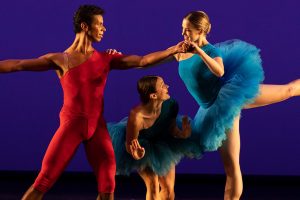
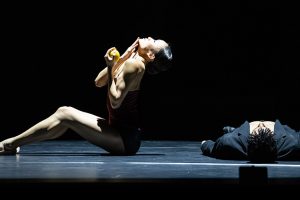

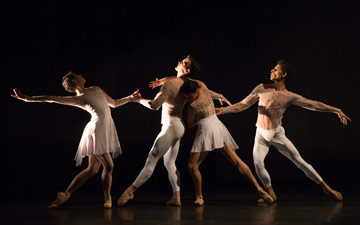



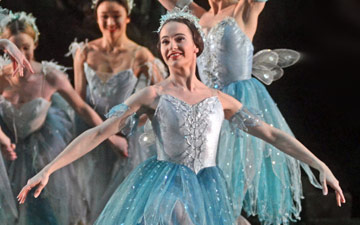
The orchestra is used for Wink. It was conducted by Philip Ellis (as was Moor’s Pavane; Shakespeare Suite was conducted by Paul Murphy). The only recorded element was the sonnets.
My fault – having seen Wink myself I should have spotted the error. Now corrected and apologies for any confusion. Ed